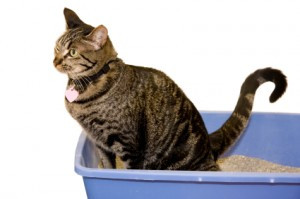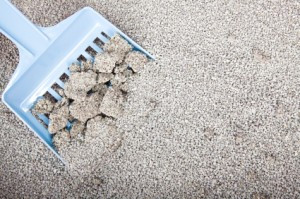Dealing with a cat who poops outside their litter box can be incredibly frustrating and confusing for any cat owner. You might find yourself wondering, “Why is my cat doing this?” and perhaps even suspecting they’re acting out of spite. Meet Eva, a sweet and playful cat who came into our lives as a stray. While she was generally good with her Cats Litter Box, occasional accidents hinted at a deeper issue. Like many cat parents, I initially dismissed these incidents, but as Eva got older, a pattern emerged, leading me on a journey to understand and solve her litter box woes.
It’s a common misconception that cats eliminate outside their designated area to express anger or displeasure. However, often, changes in a cat’s litter box behavior are linked to health concerns. Knowing this, my first step when Eva’s pooping outside the box became regular was a trip to the veterinarian. It’s crucial to rule out any underlying medical conditions before assuming it’s a behavioral problem. Thankfully, Eva was perfectly healthy, which meant we needed to delve into other potential causes for her litter box avoidance.
 iStock_000010714892XSmall
iStock_000010714892XSmall
With health issues ruled out, I began to consider behavioral and environmental factors. The idea that cats are spiteful is a human projection. In reality, cats aren’t driven by complex emotions like spite. Instead, their behavior is often rooted in comfort, safety, and preference. Eva’s situation was a puzzle. She was consistently pooping outside the cats litter box, yet she always used it for urination. This eliminated general aversion to the box itself and pointed towards something more specific.
My initial experiments were based on common advice. I tried adding another cats litter box, thinking perhaps she wanted separate boxes for pee and poop. I experimented with different box sizes and even covered boxes. Nothing worked; Eva simply continued to poop next to the new boxes. Desperate, I even tried an upside-down carpet as an aversion mat around the box. While this had limited success, it wasn’t a sustainable or complete solution.
The real breakthrough came unexpectedly. When we went on vacation and Eva stayed with a friend, she used their cats litter box perfectly! This was surprising, as I had worried the change in environment would exacerbate her issues. Upon returning home, however, the inappropriate pooping resumed. In a moment of clarity, I called my friend and asked about their litter. The answer was simple: clumping litter from a bulk pet store bin. A lightbulb went off.
Instead of forcing Eva to use a specific litter or box type, I decided to let her guide me. I set up a “litter buffet” – four different boxes with three different types of litter, all in her usual litter box area. I rotated the litters in the boxes every few days. The results were undeniable. Eva overwhelmingly preferred and exclusively used the box containing clumping litter. After months of frustration, the solution to Eva’s cats litter box problem was surprisingly straightforward: litter texture preference.
Looking back, the signs were there all along. Eva had occasionally pooped on soft surfaces like towels and rugs since she was a kitten. The subletter’s room, where most of the accidents occurred, was the only carpeted room in the house. She also exhibited subtle behaviors like minimal digging in her old litter and quickly shaking her paws after using the box, indicating discomfort. With clumping litter, her behavior transformed. She now spends a significant amount of time digging and covering, a clear sign of satisfaction and comfort in her cats litter box.
 Clumping Cat Litter
Clumping Cat Litter
Understanding your cat’s litter preferences is key to resolving many cats litter box issues related to elimination. If you’re facing similar challenges and have ruled out medical causes, consider conducting your own “litter buffet” experiment. Offer your cat several litter box options with different types of litter – clumping vs. non-clumping, different materials (clay, paper, wood), and textures. Observe which box your cat uses most frequently for both urination and defecation.
Another technique for cats with litter aversion is gradual introduction. If your cat prefers eliminating on soft surfaces, place a towel or soft carpet in a cats litter box. Once they consistently use it, gradually sprinkle their desired litter on top, slowly increasing the amount over time while reducing the soft material. This can help transition them to using litter in the box.
Finally, positive reinforcement can be incredibly effective. In Eva’s case, I kept high-value treats near her cats litter box. Whenever I heard her using it, I’d wait quietly and reward her with a treat immediately after she exited the box. This positive association further solidified her good litter box habits. Thanks to understanding Eva’s preference and using positive reinforcement, she has been accident-free for over a year.
In conclusion, if your cat is pooping outside the cats litter box, remember it’s rarely out of spite. Start by ruling out medical issues, then consider their preferences. Experiment with different litters and boxes, observe their behavior, and use positive reinforcement. By decoding your cat’s litter box habits, you can create a comfortable and preferred environment that encourages them to use their litter box consistently, bringing peace back to your home.

